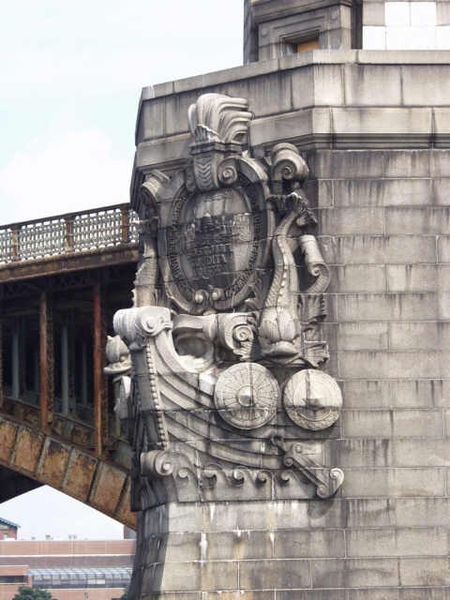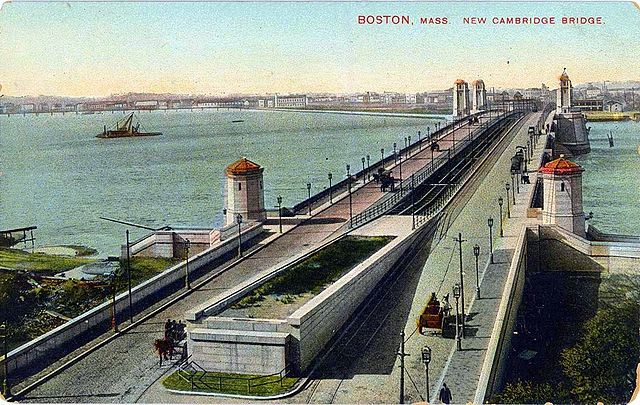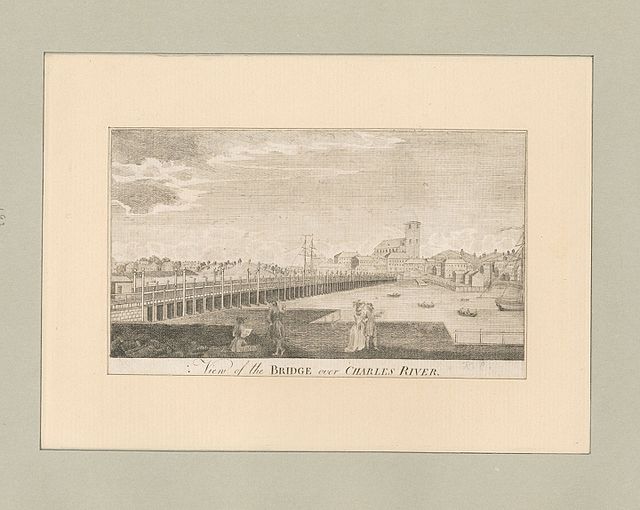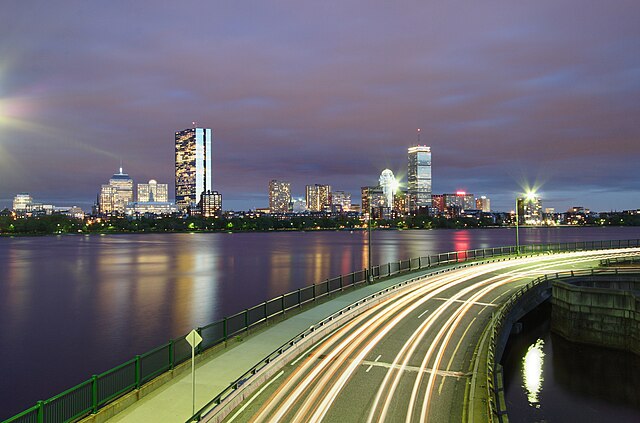The Longfellow Bridge is a steel rib arch bridge spanning the Charles River to connect Boston's Beacon Hill neighborhood with the Kendall Square area of Cambridge, Massachusetts. The bridge carries Massachusetts Route 3, the MBTA Red Line, bicycle, and pedestrian traffic. The structure was originally known as the Cambridge Bridge, and a predecessor structure was known as the West Boston Bridge; Boston also continued to use "West Boston Bridge" officially for the new bridge. The bridge is also known to locals as the "Salt-and-Pepper Bridge" due to the shape of its central towers.
Longfellow Bridge viewed from the Boston end in 2019
The main piers have sculptures that represent the prows of Viking ships.
The new Cambridge Bridge viewed from Boston, sometime between 1906 and 1912. Streetcar tracks can be seen on each side, but the central rapid transit tracks are not yet in use.
Emergency repairs under way, July 2011
The Charles River, sometimes called the River Charles or simply the Charles, is an 80-mile-long (129 km) river in eastern Massachusetts. It flows northeast from Hopkinton to Boston along a highly meandering route, that doubles back on itself several times and travels through 23 cities and towns before reaching the Atlantic Ocean. The indigenous Massachusett named it Quinobequin, meaning "meandering" or "meandering still water".
Longfellow Bridge (center) connecting Boston and Cambridge crossing a frozen Charles River
View of the bridge over Charles River, an illustration now housed in the New York Public Library
View of the Charles River and Memorial Drive in Cambridge (foreground), and the Back Bay skyline of Boston at night
A sunny day on the Charles River Esplanade








